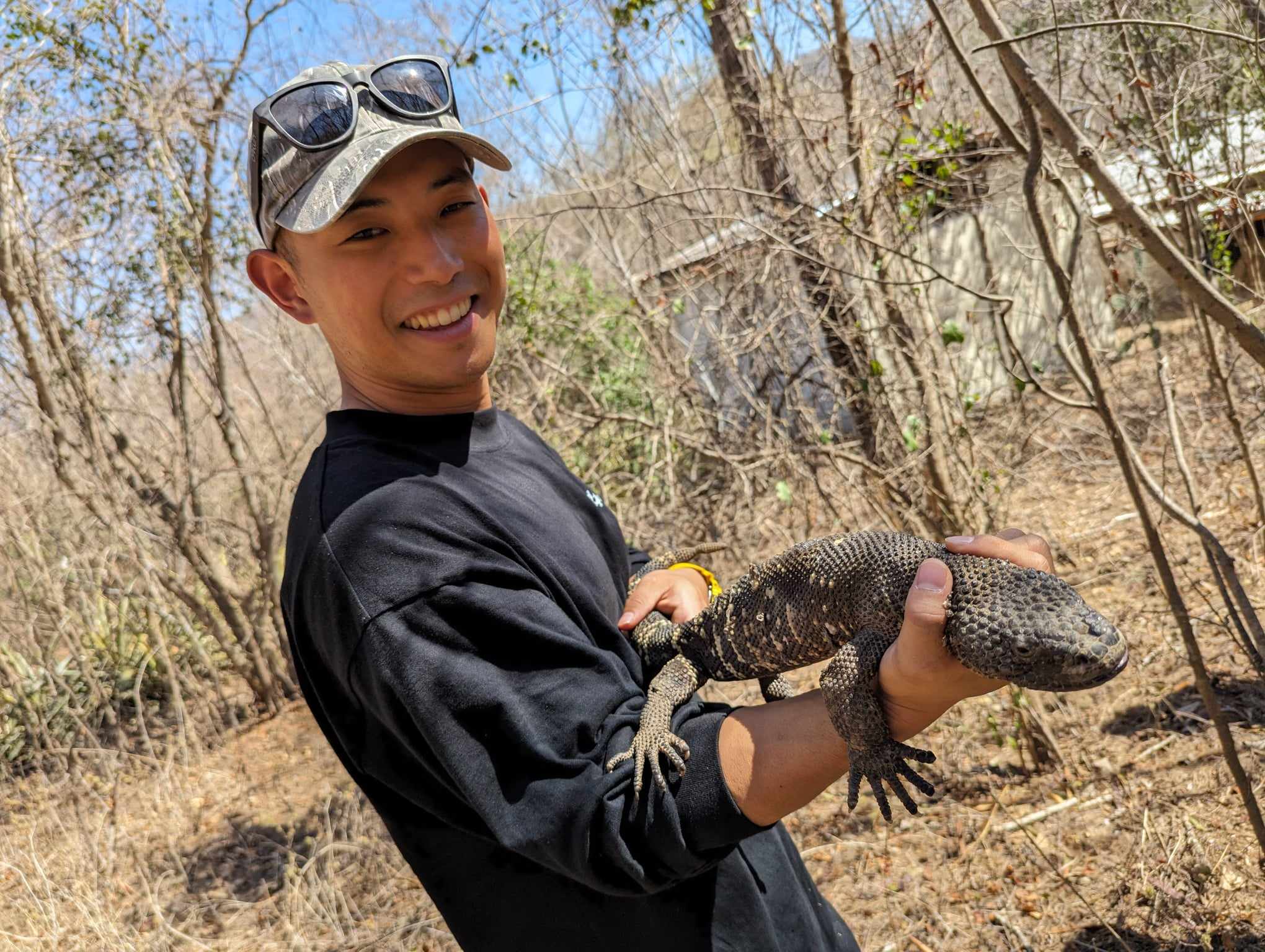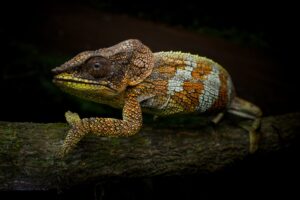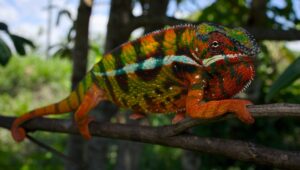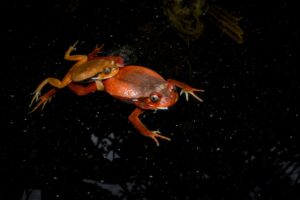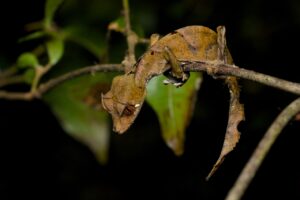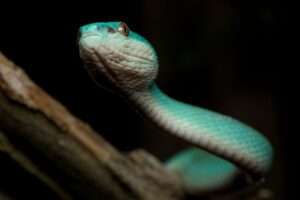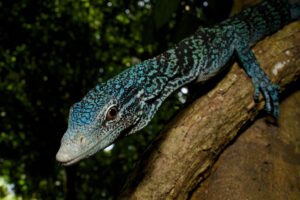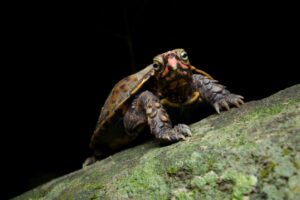The Chocó Rainforest, spanning Colombia and Ecuador, is known as a treasure trove of biodiversity. It boasts the second-highest rainfall in the world, consistently high humidity throughout the year due to the lack of a pronounced dry season, and is home to a plethora of life, including frogs that require abundant water.
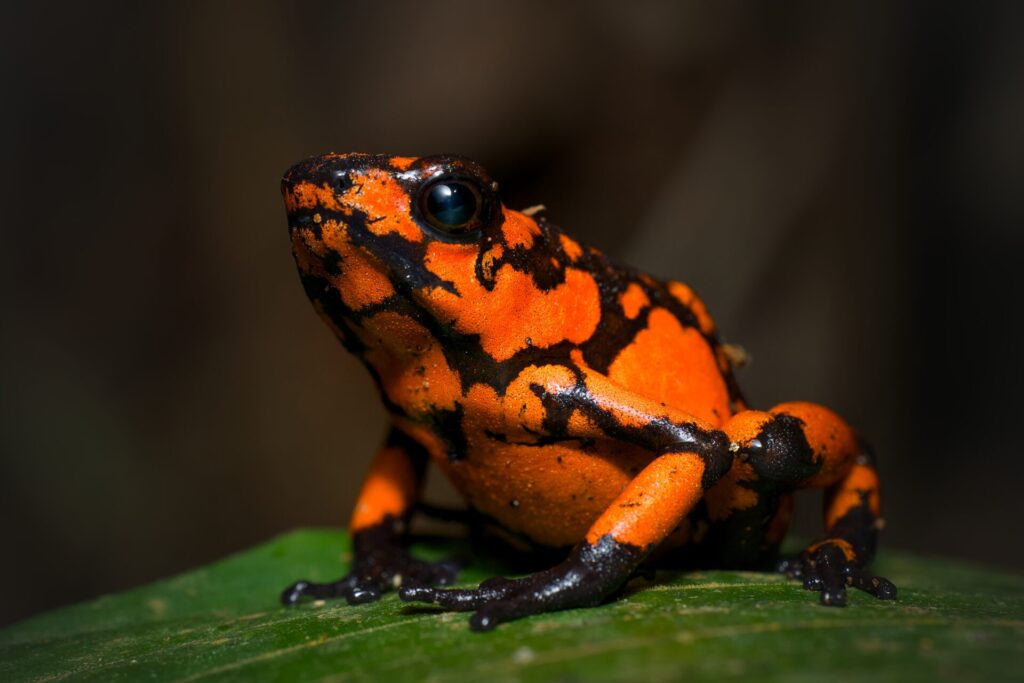
English Name: Koe-koe
This time, I went herping in Colombia, so I would like to introduce the creatures I observed.
1. Oophaga solanensis
- Scientific Name: Oophaga solanensis
- English Name: Koe-koe

This species, with its striking orange and black coloration, stands out vividly on the jungle floor. It inhabits only a very small part of northwestern Colombia. Due to its limited habitat, it is considered an endangered species, but when I actually visited its habitat, I was surprised to find quite a few of them. They often call after it rains in the afternoon, so if you search for them by listening for their calls, you may find two or more calling back and forth side by side.
2. Phyllobates aurotaenia
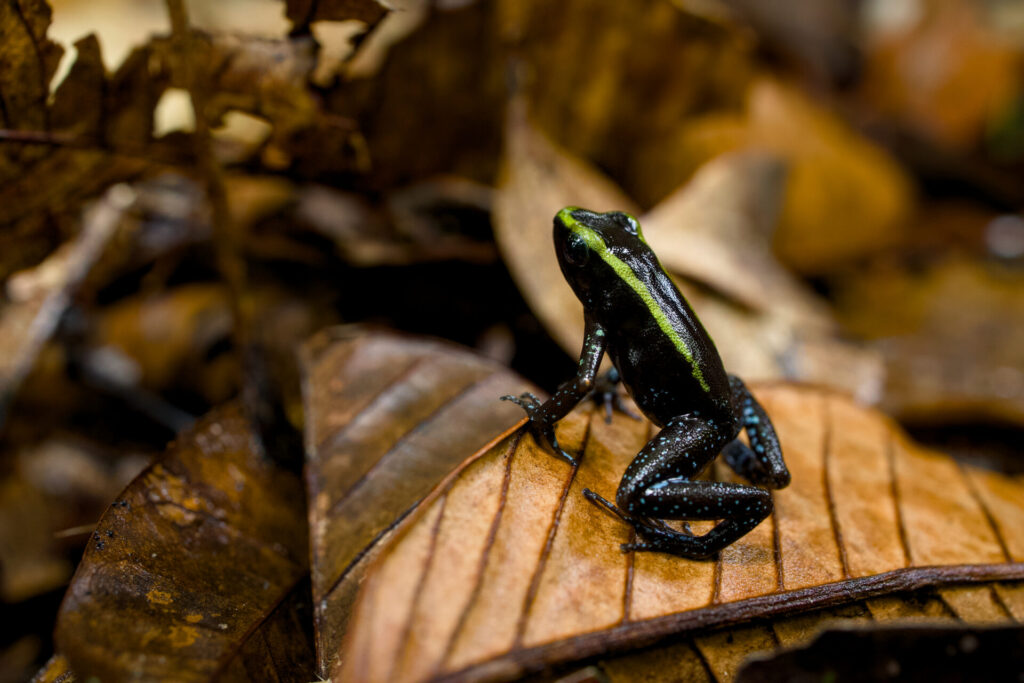
English Name: Kokoe Poison Frog
- Scientific Name: Phyllobates aurotaenia
- English Name: Kokoe Poison Frog
This is a member of the poison dart frog family, possessing the third most potent poison in the world. It is primarily diurnal and very wary, and its movements are so swift that capturing a good photograph of it is a challenging feat. The patterns on the edges of its green body and the patterns on its feet, reminiscent of a blue galaxy, are exceptionally beautiful. On this occasion, I was fortunate enough to encounter a father carrying tadpoles. This is also a species endemic to Colombia.
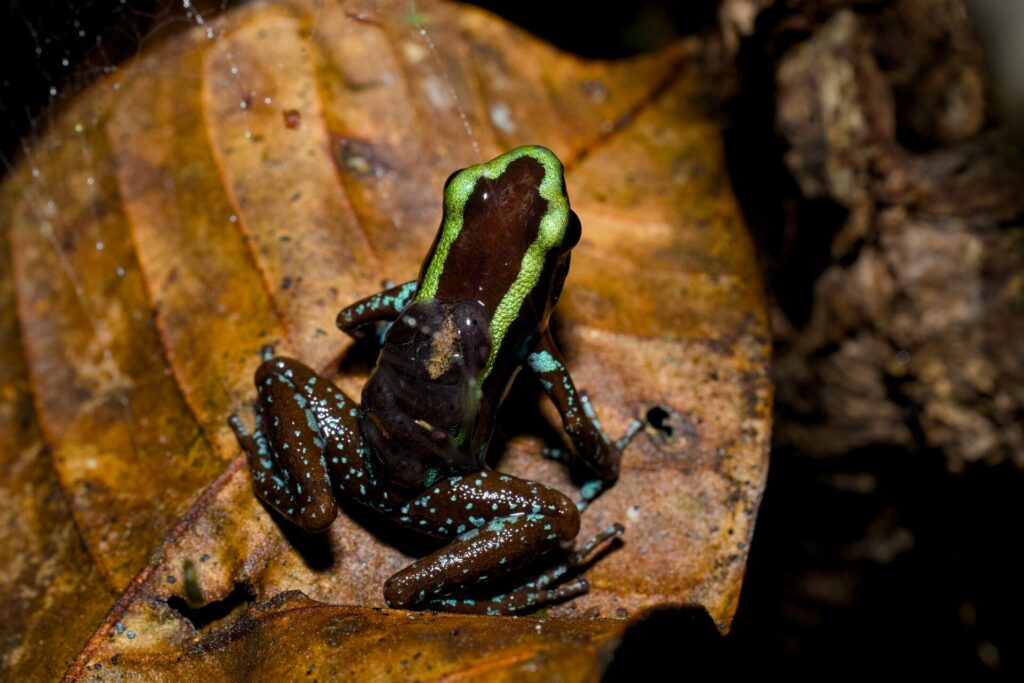
3. Atelopus spurrelli
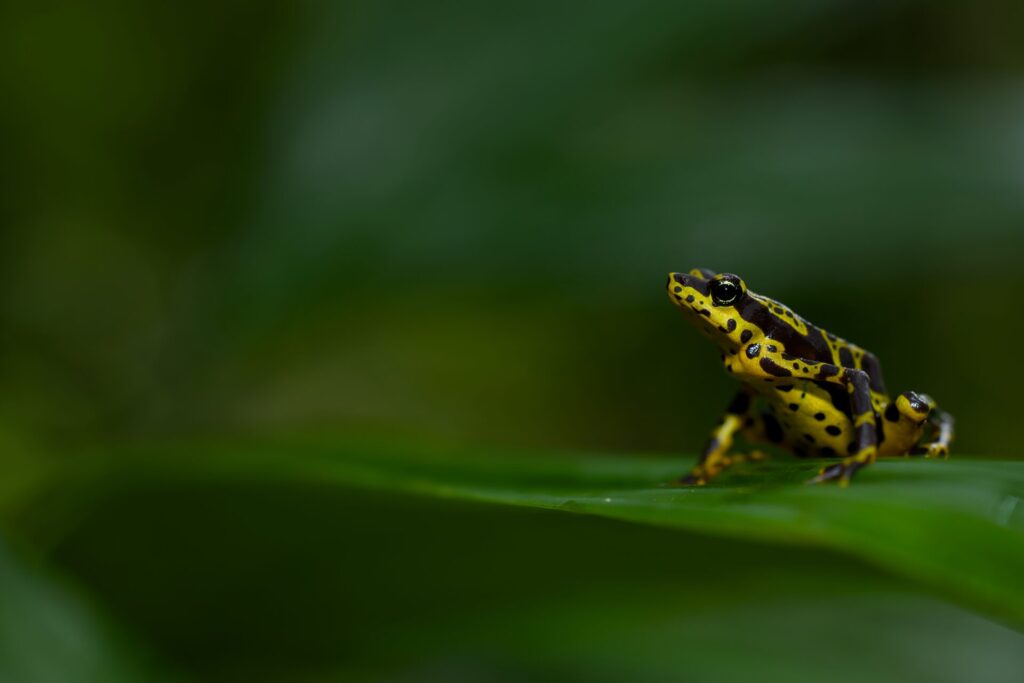
English Name: Condoto Stubfoot Toad
- Scientific Name: Atelopus spurrelli
- English Name: Condoto Stubfoot Toad
Frogs of the genus Atelopus are members of the toad family that inhabit Central and South America. They live in small streams at relatively high elevations, and all species are known to be very difficult to encounter. In the Chocó Rainforest of Colombia, there is a species called Atelopus spurrelli, which has a very beautiful yellow and black contrast, and because there are so many of them, you can almost always observe them if you go to the right observation spot. They seem to be active both day and night, and I was able to observe them active both on the ground and in the trees. The length of its limbs, which is hard to believe for a member of the toad family, and its magnificent beauty on moss-covered leaves are impressive.
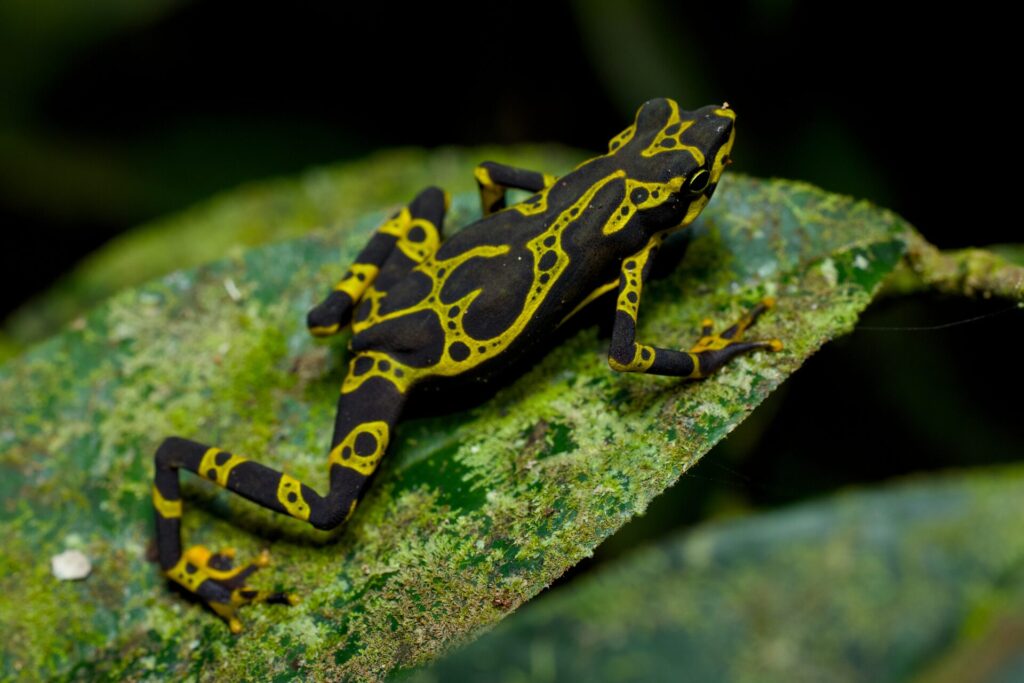
4. Cruziohyla calcarifer
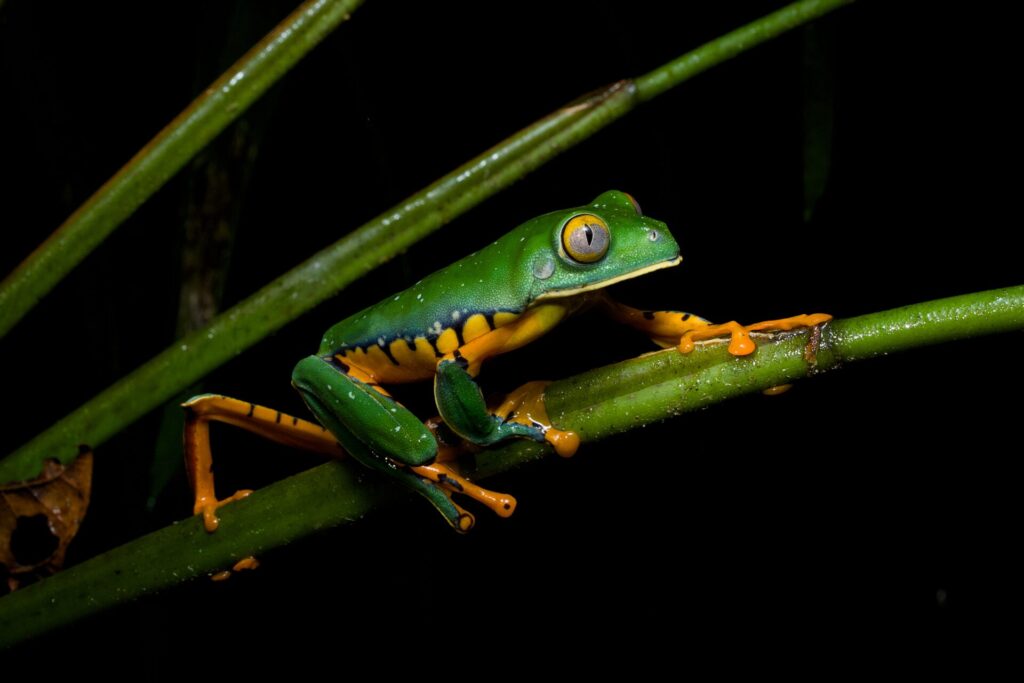
English Name: Splendid Leaf Frog
- Scientific Name: Cruziohyla calcarifer
- English Name: Splendid Leaf Frog
This is a completely arboreal frog, and because it usually lives in the canopy of the jungle, it is usually very difficult to observe. However, if it rains in the time immediately after sunset, it will start calling and come to a lower position than usual, so I was able to observe it this time. When it closes its body, it is not noticeable at all, but when it moves, the beautiful orange color of its flanks and limbs is very noticeable. Its limbs are also long, and its movements are so interesting that you can observe it forever. The patterns on the back seem to differ from individual to individual, which is very interesting.
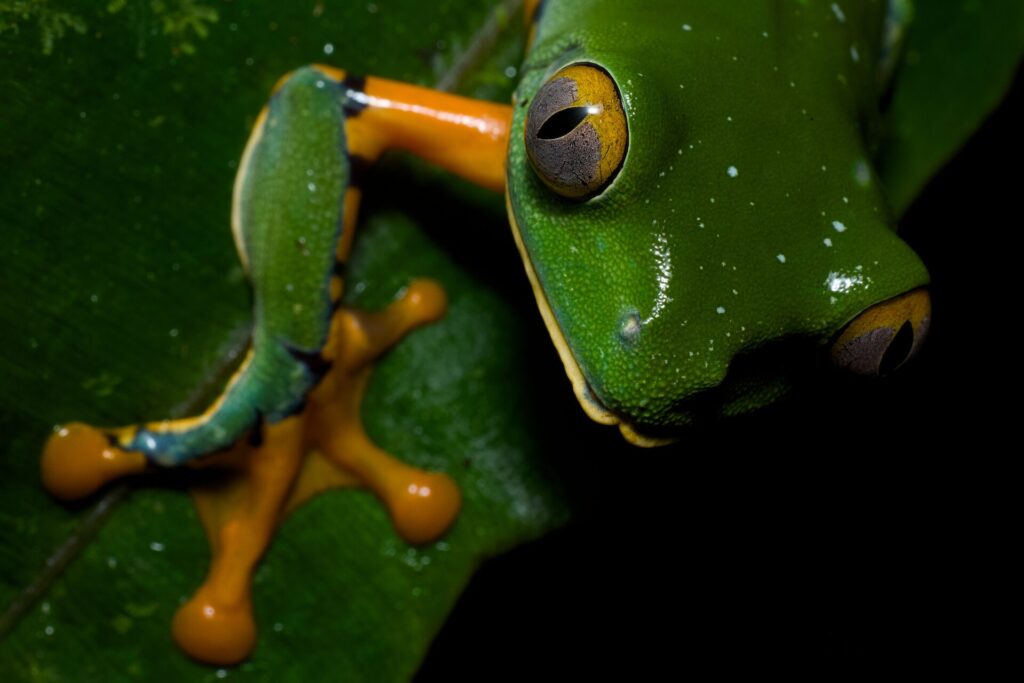
5. Agalychnis terranova
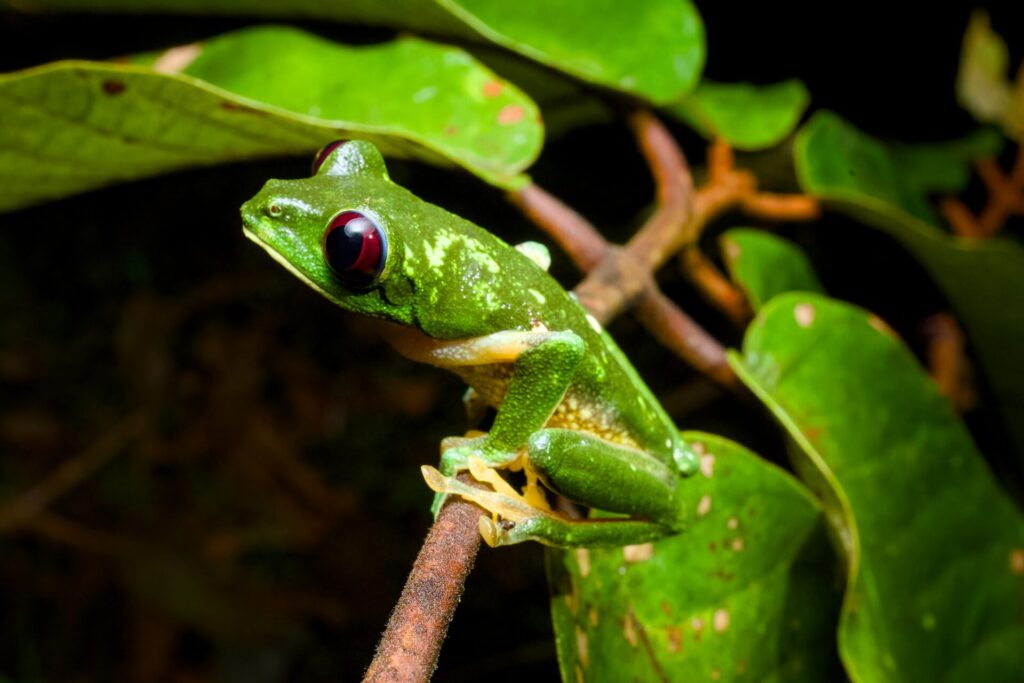
English Name: Red-eyed tree frog
- Scientific Name: Agalychnis terranova
- English Name: Red-eyed tree frog
Frogs of the genus Agalychnis are widely distributed in Central America, and there are various species because each prefers slightly different living environments. As the name suggests, there are species with red eyes and species with white eyes, so it seems like you might not know what a red-eyed tree frog is, but what they all have in common is their cuteness. The sight of it opening its big eyes wide, slowly determining where to jump next, adjusting its posture, and jumping magnificently using its large body is a symbol of the beauty of the genus Agalychnis.
6. Cochranella euknemos
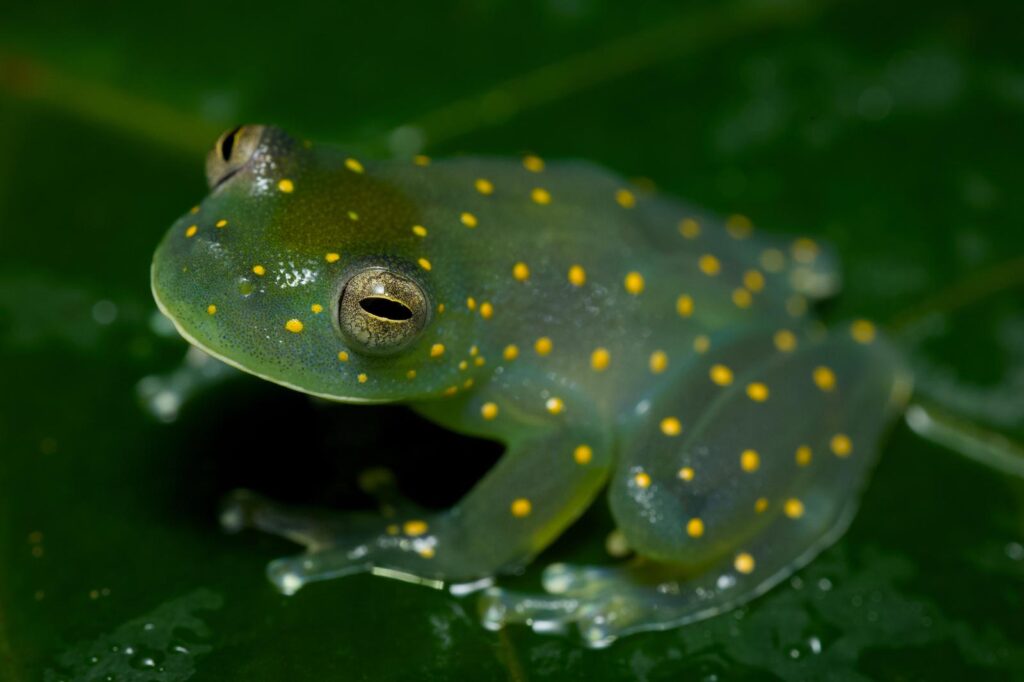
English Name: Jose Cochran frog
- Scientific Name: Cochranella euknemos
- English Name: Jose Cochran frog
This was one of the frogs I wanted to see the most this time. It is a member of the glass frog family, and is an exquisitely beautiful frog with a glass-like transparent body and yellow spots. Furthermore, there are very many individuals with a deficiency of yellow pigment around the area where I observed them this time, so everyone has a bluish body color, which is unbelievably beautiful. Members of the glass frog family can only live in highly humid areas because their skin is thin. I can’t help but wonder why they evolved in such a way. The beauty of shining blue in the jungle at night is a lifelong memory.

7. Hyalinobatrachium aeroguttatum
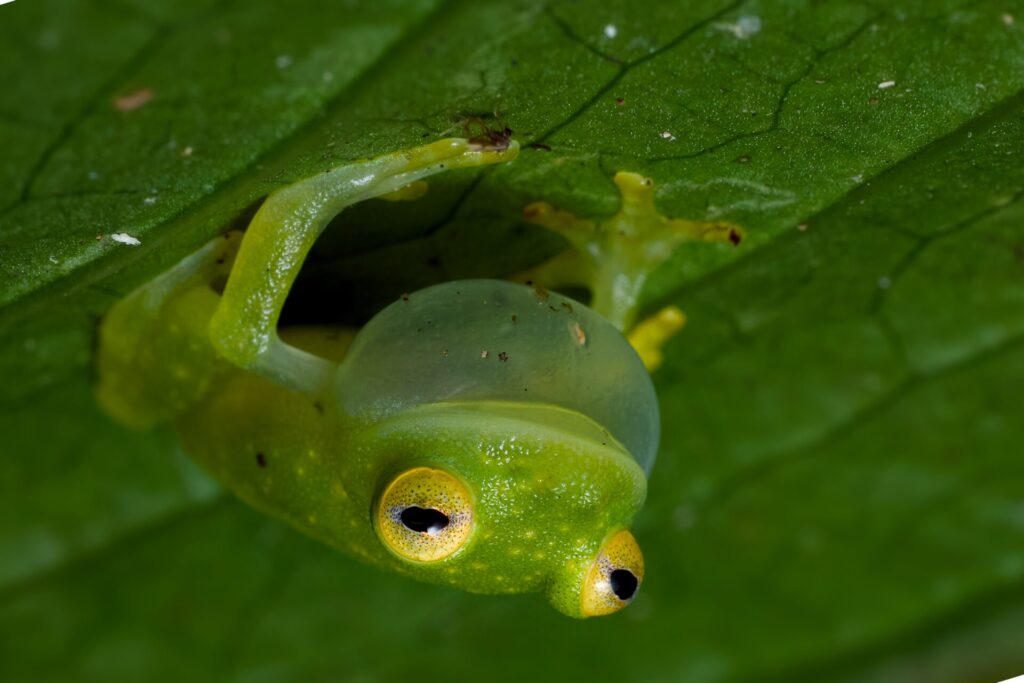
English Name: Atrato Glass Frog
- Scientific Name: Hyalinobatrachium aeroguttatum
- English Name: Atrato Glass Frog
A member of the glass frog family that I observed in the riverside area. Perhaps because the conditions were good, I could hear their calls here and there in the same area. However, because they basically live high up in the trees, it was extremely difficult to find them. Fortunately, I discovered an individual behind a leaf in a place where I looked down from a place where I climbed up a cliff. After observing it for a while, it actually called out right in front of me. Also, one of the interesting habits of this species is that the eggs are laid on the underside of leaves that protrude into the water, and the males take care of them. This time, while walking along the stream, I was lucky enough to observe the eggs and the father protecting the eggs about 5 meters above the ground.
The video of the missing figure can be viewed at the link below.
The above is just a small part of the frogs I observed in Colombia. In reality, you can observe even more, so if you are interested, please actually go herping!

